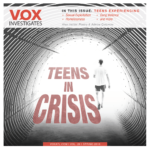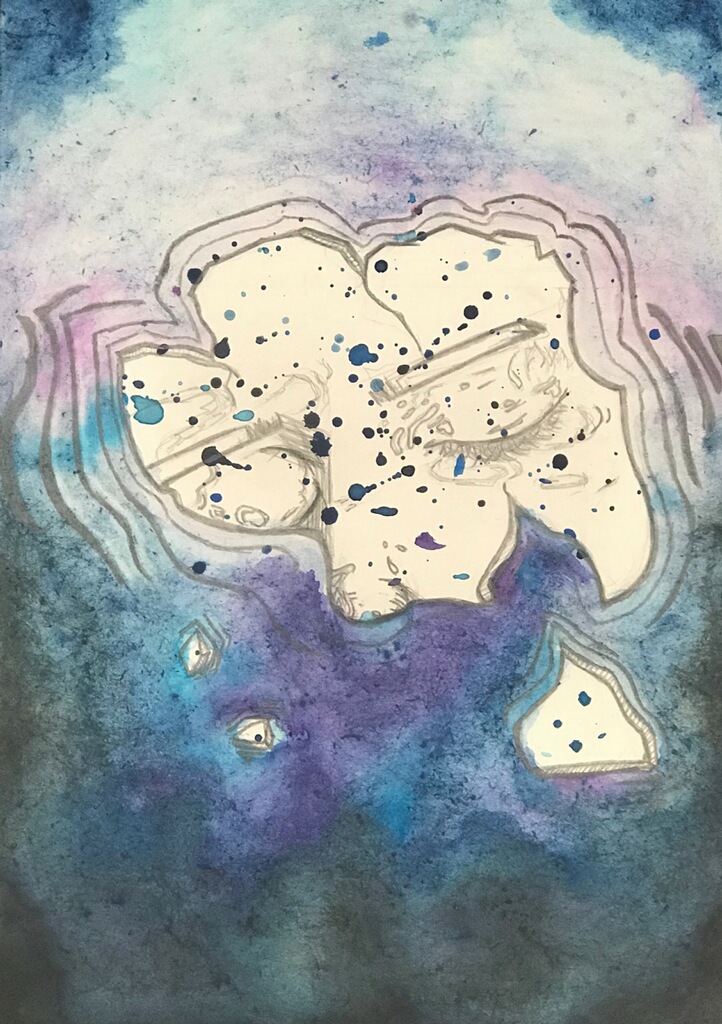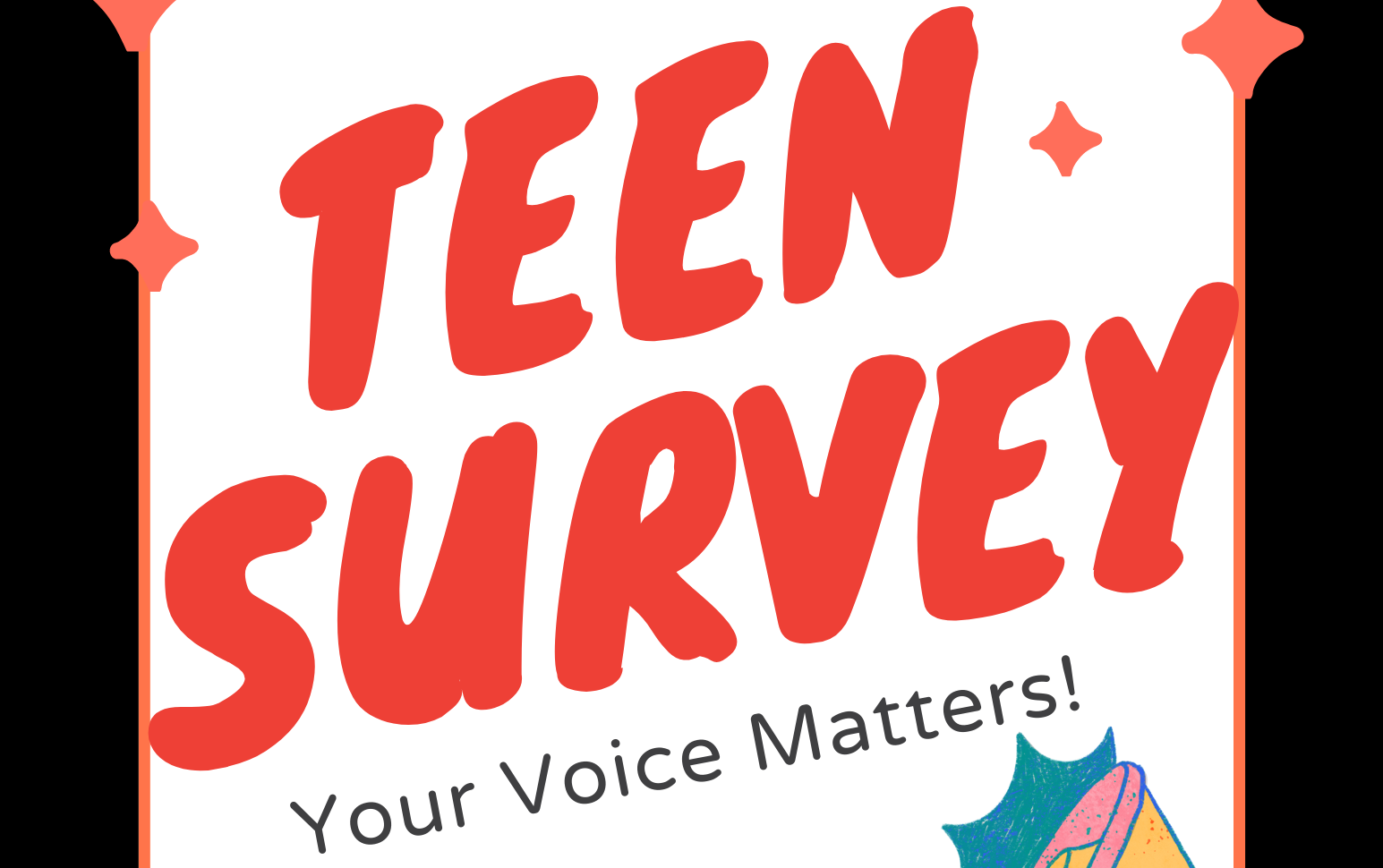It was early August, just a few days after my mother’s birthday, when I had first broken the news to her, and she had refused to hear it. And I admit, my timing supremely sucked. But here we were, sitting in the kitchen after the last few days were spent in silence and tension, as I tried once again to make her hear, make her listen.
“Mom, I know you can’t understand. That’s OK. You don’t need to. All you need to do is know. I’ve been this way since I was 8.”
I could feel desperation creeping into my voice, and I hated it. I hated being that little girl vying for the approval of her parents. I thought I had finally grown out of that. But here I was, 16 years old and in tears, asking my mom to understand me and my feelings — a feat notoriously unachievable between teens and their parents.
My mother vehemently shook her head, the rest of her body shaking with it, finally saying something.
“No. I would have known. I would have noticed,” she said, adamant in her assumptions, unwilling to hear the words I was saying.
My heart clenched for a second, and I couldn’t help the sadness and resentment that flooded into me and bled into the edges of my voice.
“Then, why didn’t you?”
Her eyes widened, but she said nothing. I took another breath. I tried to dispel that anger, that blame I felt, that sense of rage that began to overwhelm everything else. I couldn’t afford to give into my own self-righteous fury, as entitled to it as I felt. To some degree, I was aware of my own vulnerability.
“This is the way I am,” I began slowly. “I am bisexual, and on that spectrum, more attracted females than males. It’s not a phase or confusion. It’s who I am.”
At the time, I did not understand the weight of my words. At the time, I did not understand their possible consequences. I did not understand that after I had said those fateful words, my mother could have turned to me and said the words that have been spat out at hundreds upon hundreds of teens in my exact situation: “Get out of my house. And don’t come back.”
Truth be told, despite the adversity and resistance I may have faced, I am one of the lucky ones. Because I still had a home to go back to after that conversation. Because, though my mother tried her hardest to bleach that conversation from her afterwards, I still had a mother.
There have been thousands before me who have come out of that scenario without being able to say the same.
Homelessness among LGBTQ youth is quickly reaching epidemic proportions within America — and it is even more intensified for LGBTQ youth of color, like myself.
In 2017, the national policy research center for homeless young people Voices of Youth Count reported that LGBTQ teens are at a risk of homelessness that is 120 percent higher than that of heterosexual youth. This statical disproportion is strengthened by the fact that out of the 7 percent of youth experiencing homelessness, LGBTQ youth make up approximately 40 percent of that demographic, as reported by the True Colors Fund, a national nonprofit working to end homelessness among LGBTQ youth.
Despite the higher concentrations of LGBTQ-identifying demographic within metro Atlanta, and the apparent greater need for support systems that serve these youth, there are not many local organizations that serve LGBTQ youth experiencing homelessness generally or exclusively. Founded in 2011, Lost-n- Found Youth is a local nonprofit that arose from that need.
Lost-n-Found Youth endeavors to end homelessness among all sexual minority or other-identifying youth by providing support, shelter and services to these youth in times of crisis. In 2012, the organization reported that familial rejection was the highest leading cause of homelessness among the youth they serve, about 50 percent. The only other statistic that even comes close to rivaling this is eviction/unemployment, still being approximately 20 percent lower than the leading cause. As of 2015, while homelessness due to unemployment/eviction had significantly decreased, homelessness due to familial rejection increased by 10 percent, only slightly decreasing the following year. And though the organization opens its doors to all, demographics don’t lie about what kinds of teens are most at risk: 2012 to 2016 statistics reveal that nearly 70 percent of the youth Lost-n-Found serve are black, only followed by multiracial and white youth by significantly smaller margins.
But why?
LGBTQ youth experience homelessness for a variety of reasons, but it is undeniable that the intersection of race and homophobia play an instrumental part in this. Communities of color that harbor prejudice against LGBTQ individuals and their “way of life” create a toxic environment for youth that identify as anything other than heterosexual.
These youth reject their own identities because of the much-perpetuated notion that being LGBTQ is antithetical to being black. Misinformed ethnocultural views on sexuality and gender shape an ugly narrative about LGBTQ individuals, one that has had a lasting echo throughout the years. This intolerance and prejudice towards LGBTQ individuals is influenced by many other factors, whether it be some of the close-minded religious views of the black church, or aspects of black culture that breed toxicity towards LGBTQ individuals, such as the homophobia intertwined within hip-hop and R&B music.
It is a statistical fact that homeless LGBTQ youth of color disproportionately face more issues than their white or heterosexual counterparts. Additionally, they face isolation from their communities, as well as a fracturing of their identity. In communities that contain toxicity toward LGBTQ individuals, there is an idea that if you exist within the LGBTQ community, you cannot also exist in the other. And so these youth are often faced with a terrible question: choose, or leave. And that is if they even get the choice.
There are so many statistics that vividly spell out for us the vulnerability of these youth — so many statistics that we could pile them atop each other for miles and miles. Except for people like me, we don’t look at these statistics and see charts and bar graphs defining a demographic of people. We see faces behind our eyelids, the names repeated on loop within our heads. We relive the memories of the people we love in our minds. For us, these statistics become all too real. For us, these statistics define our community.
And by the looks of it, there is much, much work to be done in repairing the damage that has been done.
 Erin is 16-year old writer who attends North Cobb High School. She is a journalist and photographer who endeavors to uplift and celebrate her community.
Erin is 16-year old writer who attends North Cobb High School. She is a journalist and photographer who endeavors to uplift and celebrate her community.
Art by Erin Davis
 This story also appears in the Spring 2018 print edition of VOX Investigates: Teens In Crisis.
This story also appears in the Spring 2018 print edition of VOX Investigates: Teens In Crisis.




